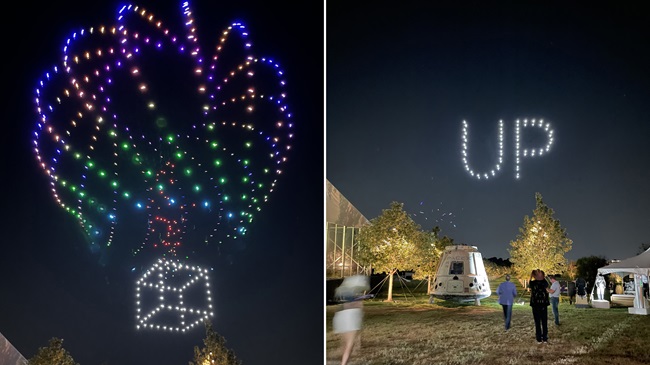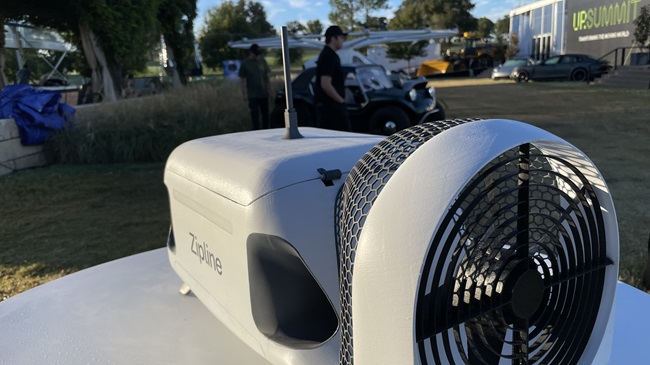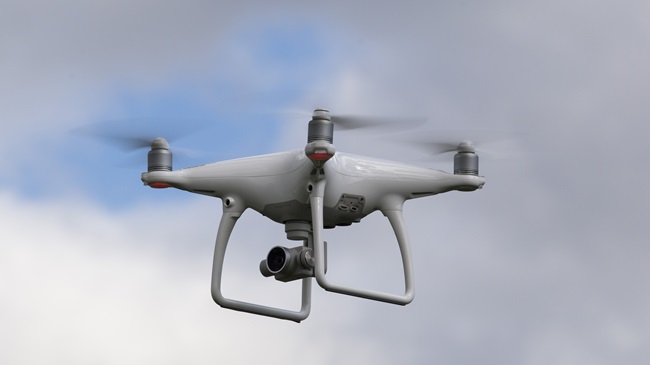Unfriendly skies: 10 things drone pilots should know about guns
Long Island incident only the latest
Shooting unmanned aircraft is unlikely to lead to federal prosecution. It is not, however, open season on quadcopters.
The inimitable New York Post reported the latest drone-downing by a civilian with an opening line, “Hey, punk, get off the airspace over my lawn!” that, intentionally or not, at least nicks the heart of an unresolved legal issue. Gerard Chasteen, 26, was charged with third-degree criminal mischief and prohibited use of a weapon after allegedly blasting a DJI Mavic 2 Zoom out of the air with a shotgun. The drone was being flown by volunteers searching for a missing dog, according to media reports and information provided by police in Suffolk County, Long Island.
“Multiple shotguns were confiscated from the residence,” police noted, but there was no mention of any federal criminal allegation, nor a referral to federal authorities.
- That’s because the federal law originally passed in the 1950s and updated in the 1980s to deter hijacking and acts of terror including aircraft sabotage and destruction has yet to be applied by prosecutors to the in-flight destruction of a drone. While the FAA has sought to discourage anti-unmanned-aircraft fire dating back to 2016, and 18 U.S.C. 32 was the federal law cited, AOPA Legal Services Plan attorney Rachel McConoughey, one of our unmanned aircraft experts, co-authored with W. Eric Richey an article in the January issue of SC Lawyer (starting on page 28) that covers a hypothetical scenario very similar to what allegedly transpired on Long Island, and elsewhere around the country in a handful of similar incidents in recent years. “While shooting at an aircraft is a federal crime, and drones are considered ‘aircraft’ under federal law, the government has not shown much interest in prosecuting drone shootdown cases in the past,” McConoughey and Richey wrote.
- The legal limits of aerial property rights remain unclear. The Supreme Court ruled in 1946 that property rights extend some distance above the ground (a farmer sought compensation from the government after military overflights as low as 83 feet agl scared his chickens to death), but the justices stopped short of defining exactly how high above ground a landowner's rights extend.
- At least one other lawyer has opined that while the federal government considers drones to be “aircraft” for purposes of requiring registration and other rules, that aircraft sabotage law doesn’t apply to unmanned aircraft because they don’t carry people, by definition. Specifically, he argues, the definition of “aircraft” requires that the aircraft have doors.
- That doesn’t mean it is open season on your quadcopter. State and local laws and ordinances generally restrict firearms discharge in urban and suburban communities, and laws against destruction of property may also apply. (See McConoughey’s article above.)
- It can get expensive. Brad Jones watched helplessly as his DJI Inspire 2 (a rather expensive rig) tumbled to the ground on Easter Sunday in 2017. It was the fourth such incident Ars Technica had counted up to that point, and post-crash photos suggest a bullet, rather than shotgun pellets, may have been the projectile involved. AirVūz News covered the same incident in this video.
- Flying a little higher might help. Shotguns appear to have emerged as the weapon of choice for those downing drones in anger, and it makes sense because they’re pretty effective against birds. But shotguns loaded with buckshot or birdshot have limited range, and the pellets spread out rather quickly. If your drone is 150 feet in the air, it becomes a very difficult target to hit. The Firearm Blog provides some pertinent ballistics and accuracy data for perspective, and a video from the range. Flying low over homes might also irritate some folks enough to pop off a few rounds. The New York Post tried to ask Gerard Chasteen about that, but he wasn’t in the mood to comment.
- A lot of people are really irritated about drones. The town of Deer Trail, Colorado, made national news in 2013 with a proposed ordinance that would allow residents to shoot down drones and even claim a bounty. Sound a bit crazy? Other Deer Trail residents thought so, too. The measure was overwhelmingly rejected at the ballot box.
- The state of the anti-drone art continues to advance, and the aforementioned shotgun may still be the most effective counter-drone technology available. Wired took a look at this in 2017, including a custom shotgun load made just for downing drones.
- Thermal runaway is still a thing. Most drones flown by civilians are powered by lithium-based batteries, and they can get quite hot when angry. If your drone does take a bullet (or a load of buckshot) that penetrates the battery, the ensuing fire can do far more damage than the original projectile. Here’s one of many demonstrations that might convince you to approach a downed and damaged drone with caution.
- While the federal government has yet to prosecute anyone for shooting down a drone, pointing lasers at aircraft does get a lot of attention, and prosecution. A search of Federal Bureau of Investigation press releases turned up zero results for investigations or prosecutions related to shooting drones, but dozens of cases including successful prosecutions for idiots who point lasers at aircraft.




